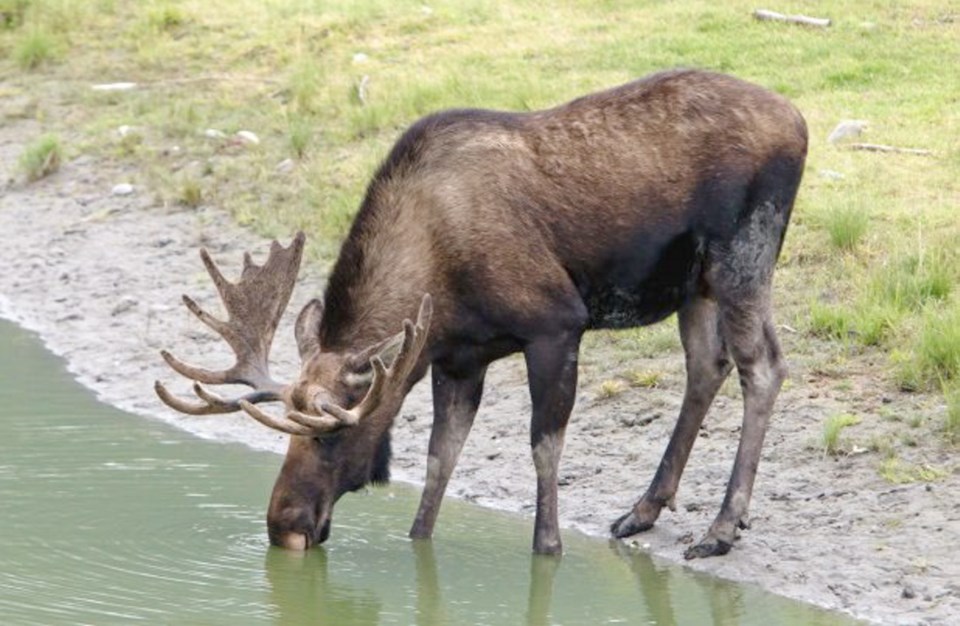The B.C. government announced Wednesday it is launching a major five-year study into the decline of moose in the Interior.
The study will involve at least 11 wildlife biologists and one wildlife veterinarian along with the radio-collaring of more than 200 moose to track their movements and investigate the causes of deaths.
The study is in response to a consultant’s report for the province released last August that showed the “most plausible” explanation for a serious decline in moose populations in the Cariboo is the mountain pine beetle epidemic, including the large-scale salvage logging that followed.
Increased logging roads and vast clearcuts made the moose more vulnerable to hunters and to predators such as wolves.
The report by Wildlife Infometrics of Mackenzie noted a lack of information and urged the province to increase monitoring, including the “collection of basic inventory” data and research to improve understanding of moose mortality rates.
The new study, which has a total budget of just over $2 million, will seek to identify the factors behind the declines and what can be done to reverse them.
Five study areas have been identified ranging from near Fort St. James south to the Bonaparte region northwest of Kamloops, with the possible addition of three more as the work progresses. The areas cover a range of landscapes in terms of age of forest, amount of pine-beetle infestation, salvage logging and road building.
The Sun reported in 2012 that surveys by the province over the previous two winters have discovered serious moose declines:
• A 70-per-cent drop since 1997 in the 5,000-square-kilometre Nass Wildlife Area near Terrace.
• A 60-per-cent drop in the Anahim Lake/Dean River area and 17-per-cent decline in the Rose Lake-Miocene area.
• A 50-per-cent drop since 2005 around Prince George.
• A 20-per-cent drop since 2004 in the Bulkley Valley-Lakes District in west-central B.C.
The province in 2011 estimated B.C.’s moose population at 145,000 to 235,000.



